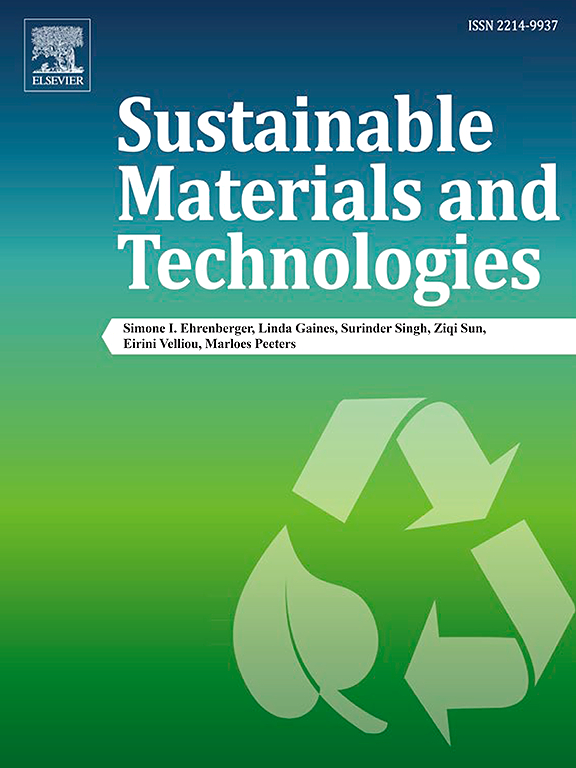Optimizing lithium carbonate recovery through gas-liquid reactive crystallization of lithium hydroxide and carbon dioxide
IF 8.6
2区 工程技术
Q1 ENERGY & FUELS
引用次数: 0
Abstract
Reactive crystallization of Li2CO3 in a semi-batch reactor using carbon dioxide (CO2) has been studied in the literature with an aim to enhance recovery of lithium from primary and secondary resources. However, an in-depth understanding of control variables that can enhance the yield of the recovery process is missing. Here, we discuss the fundamentals of Li2CO3 reactive crystallization from LiOH solution by carbon dioxide (CO2) injection to optimize lithium recovery. The significant factors affecting Li2CO3 crystallization, such as initial LiOH concentration, temperature, and CO2 flow rate, are investigated. The solid-liquid transitions and chord length distributions are monitored during Li2CO3 crystallization using in situ focused beam reflectance measurement (FBRM) and particle vision measurement (PVM) probes. Our results show that maximum lithium recovery corresponds to system pH maximum, influenced by the formation of soluble lithium bicarbonate. Furthermore, the work proposes an optimized CO2 injection strategy for maximizing lithium recovery in the form of Li2CO3 precipitates.

通过氢氧化锂和二氧化碳气液反应结晶优化碳酸锂回收率
有文献研究了在半间歇反应器中使用二氧化碳(CO2)反应结晶 Li2CO3 的过程,目的是提高原生和次生资源中锂的回收率。然而,目前还缺乏对可提高回收过程产量的控制变量的深入了解。在此,我们讨论了通过注入二氧化碳(CO2)从 LiOH 溶液中反应结晶 Li2CO3 以优化锂回收的基本原理。研究了影响 Li2CO3 结晶的重要因素,如初始 LiOH 浓度、温度和二氧化碳流速。使用原位聚焦光束反射测量(FBRM)和粒子视觉测量(PVM)探针监测了 Li2CO3 结晶过程中的固液转变和弦长分布。结果表明,受可溶性碳酸氢锂形成的影响,最大锂回收率与系统 pH 值最大值相对应。此外,该研究还提出了一种优化的二氧化碳注入策略,以最大限度地提高以 Li2CO3 沉淀形式存在的锂的回收率。
本文章由计算机程序翻译,如有差异,请以英文原文为准。
求助全文
约1分钟内获得全文
求助全文
来源期刊

Sustainable Materials and Technologies
Energy-Renewable Energy, Sustainability and the Environment
CiteScore
13.40
自引率
4.20%
发文量
158
审稿时长
45 days
期刊介绍:
Sustainable Materials and Technologies (SM&T), an international, cross-disciplinary, fully open access journal published by Elsevier, focuses on original full-length research articles and reviews. It covers applied or fundamental science of nano-, micro-, meso-, and macro-scale aspects of materials and technologies for sustainable development. SM&T gives special attention to contributions that bridge the knowledge gap between materials and system designs.
 求助内容:
求助内容: 应助结果提醒方式:
应助结果提醒方式:


